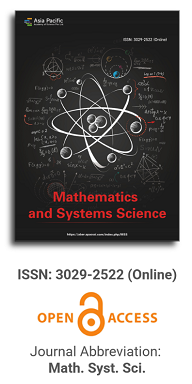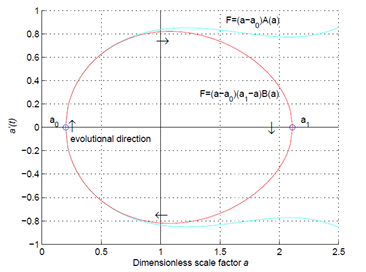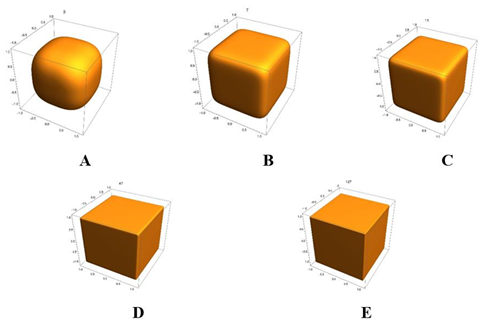


Investigating the drivers and barriers of digital resource utilization in mathematical culture curricula development: A PLS-SEM analysis with Chinese teachers
Vol 2, Issue 2, 2024
Download PDF
Abstract
The convergence of technology and education has enabled the creation of instructional programs utilizing digital resources, garnering significant interest from educators in developing mathematical culture curricula. This study investigates these factors by incorporating the perceived importance of policy (PIP) variables into the unified theory of acceptance and use of technology (UTAUT) model. Quantitative analysis was employed to collect online questionnaire data from 873 teachers in Henan Province, which was subsequently analyzed using partial least squares structural equation modeling (PLS-SEM). The findings revealed that (1) performance expectation did not significantly impact teachers’ intentions and behaviors regarding the use of digital resources for developing mathematics culture lessons; (2) effort expectations negatively influenced such use; and (3) social influence, facilitating conditions, and perceived policy importance emerged as key drivers, with social influence exerting the most substantial impact. These insights enhance our understanding of the factors influencing teachers’ integration of digital resources in mathematics culture curriculum development. They can inform strategies to improve teachers’ knowledge of teaching with mathematics technology (KTMT) and to promote technology-enhanced mathematics teaching and learning.
Keywords
References
- Park W, Cho H. The interaction of history and STEM learning goals in teacher-developed curriculum materials: opportunities and challenges for STEAM education. Asia Pacific Education Review. 2022; 23(3): 457-474. doi: 10.1007/s12564-022-09741-0
- Drake S, Burns R. Meeting Standards Through Integrated Curriculum. Alexandria, Va.: Association for Supervision and Curriculum Development; 2004.
- Xie M, Chi Z. Humanistic Value and Curricular Significance of Mathematics Education (Chinese). Journal of South China Normal University (Social Science Edition). 2022; 3: 78-87.
- d’Entremont Y. Linking Mathematics, Culture and Community. Procedia - Social and Behavioral Sciences. 2015; 174: 2818-2824. doi: 10.1016/j.sbspro.2015.01.973
- Xu N, Wang X. Mathematics Culture Craze and Research on Cultural History of mathematics (Chinese). Journal of Dialectics of Nature. 2009; 31: 14-18. doi: 10.15994/j.1000-0763.2009.03.003
- Xu N, Liu P. Mathematics Culture Craze: Meaning and Reflection (Chinese). Journal of Dialectics of Nature. 2020; 42: 102-106. doi: 10.15994/j.1000-0763.2020.08.015
- Xu J, Yanan L, Xun W. The Mathematics Culture Curriculum from the Perspective of Classroom Integration (Chinese). Journal of the Chinese Society of Education. 2023; S2: 61-63.
- Tang X, Yuan Z, Deng X, et al. Predicting secondary school mathematics teachers’ digital teaching behavior using partial least squares structural equation modeling. Electronic Research Archive. 2023; 31(10): 6274-6302. doi: 10.3934/era.2023318
- de Araujo Z, Otten S, Birisci S. Teacher-created videos in a flipped mathematics class: digital curriculum materials or lesson enactments? ZDM. 2017; 49(5): 687-699. doi: 10.1007/s11858-017-0872-6
- Confrey J, Gianopulos G, McGowan W, et al. Scaffolding learner-centered curricular coherence using learning maps and diagnostic assessments designed around mathematics learning trajectories. ZDM. 2017; 49(5): 717-734. doi: 10.1007/s11858-017-0869-1
- Clark-Wilson A, Robutti O, Thomas M. Teaching with digital technology. ZDM. 2020; 52(7): 1223-1242. doi: 10.1007/s11858-020-01196-0
- Rocha H. Using tasks to develop pre-service teachers’ knowledge for teaching mathematics with digital technology. ZDM. 2020; 52(7): 1381-1396. doi: 10.1007/s11858-020-01195-1
- Günster SM, Weigand HG. Designing digital technology tasks for the development of functional thinking. ZDM. 2020; 52(7): 1259-1274. doi: 10.1007/s11858-020-01179-1
- Venkatesh V, Morris MG, Davis GB, et al. User Acceptance of Information Technology: Toward a Unified View. MIS Quarterly. 2003; 27(3): 425. doi: 10.2307/30036540
- Fox CJRNL. Navigating the digital shift: Mapping the acquisition of digital instructional materials. Washington, DC: State Educational Technology Directors Association (SETDA); 2015.
- Heine S, Krepf M, König J. Digital resources as an aspect of teacher professional digital competence: One term, different definitions—a systematic review. Education and Information Technologies. 2022; 28(4): 3711-3738. doi: 10.1007/s10639-022-11321-z
- Li NL. Teachers’ Willingness to Accept Digital Resources and Its Influencing Factors—A Survey Based on 473 Online CFL Teachers (Chinese). Education Research Monthly. 2023; 69-76. doi: 10.16477/j.cnki.issn1674-2311.2023.07.006
- Mußmann F, Hardwig T, Riethmüller M, Klötzer S. Digitalization in the school system 2021 (German). Kooperationsstelle Hochschulen und Gewerkschaften der Georg-August-Universität Göttingen: Göttingen; 2021.
- Kervin L, Danby S, Mantei J. A cautionary tale: digital resources in literacy classrooms. Learning, Media and Technology. 2019; 44(4): 443-456. doi: 10.1080/17439884.2019.1620769
- Redecker CP. European framework for the digital competence of educators. DigCompEdu; Publications Office of the European Union; 2017.
- Ling QW, Impetus Y. Trajectory and Challenges of Digital Transformation in French Education: An Analysis Based on the 2023-2027 Digital Education Strategy (Chinese). e-Education Research. 2024; 45: 121-128. doi: 10.13811/j.cnki.eer.2024.02.017
- Huai J. Working Together to Drive Digital Education Adoption, Sharing and Innovation—Keynote Speech at the 2024 World Conference on Digital Education. Chinese Journal of ICT in Education. 2024; 30: 3-10.
- Wilder RL. Mathematics as a Cultural System, 1st ed. Pergamon Press; 1981.
- Bishop AJ. Mathematics education in its cultural context. Educational Studies in Mathematics. 1988; 19(2): 179-191. doi: 10.1007/bf00751231
- D’ambrosio U. Ethnomathematics and its Place in the History and Pedagogy of Mathematics. For the Learning of Mathematics. 1985; 5: 44-48.
- Wang X. Analysis of Mathematical Cultural Connotation Based on Mathematical History (Chinese). Research on Curriculum and Teaching. 2019; 4: 37-43.
- Yu Q, Wang X. An Empirical Study of the Meaning of Mathematical Culture Based on the History of Mathematics (Chinese). Journal of Mathematics Education. 2020; 29: 68-74.
- Li Z, Wang X. A Research on Mathematical Culture in Exercises in Middle School Mathematics Textbooks in France (Chinese). Journal of Comparative Education. 2022; 2: 160-175.
- Lei P, Kong W, Han S, et al. The Mathematical Culture in Test Items of National College Entrance Examination in China from 1978 to 2021. Mathematics. 2022; 10(21): 3987. doi: 10.3390/math10213987
- Zhang H, Ran Y. Implementation of STEAM Education Concept: Construction and Application of Mathematical Cultural Project-based Learning Model (Chinese). China Educational Technology. 2020; 7: 97-103.
- Chen T, Sun Q. A Study on the Influence of Teachers’ Participation in Mathematical Cultural Activities on the Professional Development for Mathematics in Primary School: An Empirical Investgation of 11228 Primary School Mathematics Teachers (Chinese). Teacher Education Research. 2023; 35: 84-91. doi: 10.13445/j.cnki.t.e.r.2023.02.002
- Choppin J, Borys Z. Trends in the design, development, and use of digital curriculum materials. ZDM. 2017; 49(5): 663-674. doi: 10.1007/s11858-017-0860-x
- Pepin B, Gueudet G, Trouche L. Refining teacher design capacity: Mathematics teachers’ interactions with digital curriculum resources. ZDM. 2017; 49(5): 799-812. doi: 10.1007/s11858-017-0870-8
- Bates MS. Leveraging digital tools to build educative curricula for teachers: two promising approaches. ZDM. 2017; 49(5): 675-686. doi: 10.1007/s11858-017-0868-2
- Davis FD. Perceived Usefulness, Perceived Ease of Use, and User Acceptance of Information Technology. MIS Quarterly. 1989; 13(3): 319. doi: 10.2307/249008
- Wijaya T, Cao Y, Weinhandl R, et al. Applying the UTAUT Model to Understand Factors Affecting Micro-Lecture Usage by Mathematics Teachers in China. Mathematics. 2022; 10(7): 1008. doi: 10.3390/math10071008
- Patil H, Undale S. Willingness of university students to continue using e-Learning platforms after compelled adoption of technology: Test of an extended UTAUT model. Education and Information Technologies. 2023; 28(11): 14943-14965. doi: 10.1007/s10639-023-11778-6
- Hu S, Laxman K, Lee K. Exploring factors affecting academics’ adoption of emerging mobile technologies-an extended UTAUT perspective. Education and Information Technologies. 2020; 25(5): 4615-4635. doi: 10.1007/s10639-020-10171-x
- Šumak B, Šorgo A. The acceptance and use of interactive whiteboards among teachers: Differences in UTAUT determinants between pre- and post-adopters. Computers in Human Behavior. 2016; 64: 602-620. doi: 10.1016/j.chb.2016.07.037
- Bardakcı S, Alkan MF. Investigation of Turkish preservice teachers’ intentions to use IWB in terms of technological and pedagogical aspects. Education and Information Technologies. 2019; 24(5): 2887-2907. doi: 10.1007/s10639-019-09904-4
- Dahri NA, Al-Rahmi WM, Almogren AS, et al. Acceptance of Mobile Learning Technology by Teachers: Influencing Mobile Self-Efficacy and 21st-Century Skills-Based Training. Sustainability. 2023; 15(11): 8514. doi: 10.3390/su15118514
- Yildiz E, Arpaci I. Understanding pre-service mathematics teachers’ intentions to use GeoGebra: The role of technological pedagogical content knowledge. Education and Information Technologies. Published online March 14, 2024. doi: 10.1007/s10639-024-12614-1
- Tosuntaş ŞB, Karadağ E, Orhan S. The factors affecting acceptance and use of interactive whiteboard within the scope of FATIH project: A structural equation model based on the Unified Theory of acceptance and use of technology. Computers & Education. 2015; 81: 169-178. doi: 10.1016/j.compedu.2014.10.009
- Zenda R, Dlamini R. Examining factors that influence teachers to adopt information and Communication Technology in rural secondary schools: an empirical study. Education and Information Technologies. 2022; 28(1): 815-832. doi: 10.1007/s10639-022-11198-y
- Guillén‐Gámez FD, Colomo‐Magaña E, Ruiz-Palmero J, et al. Teaching digital competence in the use of YouTube and its incidental factors: Development of an instrument based on the UTAUT model from a higher order PLS‐SEM approach. British Journal of Educational Technology. 2023; 55(1): 340-362. doi: 10.1111/bjet.13365
- Fitrianie S, Horsch C, Beun RJ, et al. Factors Affecting User’s Behavioral Intention and Use of a Mobile-Phone-Delivered Cognitive Behavioral Therapy for Insomnia: A Small-Scale UTAUT Analysis. Journal of Medical Systems. 2021; 45(12). doi: 10.1007/s10916-021-01785-w
- Almagrashi A, Mujalli A, Khan T, et al. Factors determining internal auditors’ behavioral intention to use computer-assisted auditing techniques: an extension of the UTAUT model and an empirical study. Future Business Journal. 2023; 9(1). doi: 10.1186/s43093-023-00231-2
- Venkatesh V, Thong JYL, Xu X. Consumer Acceptance and Use of Information Technology: Extending the Unified Theory of Acceptance and Use of Technology. MIS Quarterly. 2012; 36(1): 157. doi: 10.2307/41410412
- Sheppard BH, Hartwick J, Warshaw PR. The Theory of Reasoned Action: A Meta-Analysis of Past Research with Recommendations for Modifications and Future Research. Journal of Consumer Research. 1988; 15(3): 325. doi: 10.1086/209170
- Ajzen I. The theory of planned behavior. Organizational Behavior and Human Decision Processes. 1991; 50: 179-211. doi: 10.1016/0749-5978(91)90020-T
- Sang G, Valcke M, van Braak J, et al. Predicting ICT integration into classroom teaching in Chinese primary schools: exploring the complex interplay of teacher-related variables. Journal of Computer Assisted Learning. 2010; 27(2): 160-172. doi: 10.1111/j.1365-2729.2010.00383.x
- Huang F, Teo T. Influence of teacher-perceived organisational culture and school policy on Chinese teachers’ intention to use technology: an extension of technology acceptance model. Educational Technology Research and Development. 2019; 68(3): 1547-1567. doi: 10.1007/s11423-019-09722-y
- Huang F, Teo T, Zhao X. Examining factors influencing Chinese ethnic minority English teachers’ technology adoption: an extension of the UTAUT model. Computer Assisted Language Learning. 2023; 2023: 1-23. doi: 10.1080/09588221.2023.2239304
- Taylor S, Todd PA. Understanding Information Technology Usage: A Test of Competing Models. Information Systems Research. 1995; 6(2): 144-176. doi: 10.1287/isre.6.2.144
- Sultana J. Determining the factors that affect the uses of Mobile Cloud Learning (MCL) platform Blackboard- a modification of the UTAUT model. Education and Information Technologies. 2019; 25(1): 223-238. doi: 10.1007/s10639-019-09969-1
- Michels M, Bonke V, Musshoff O. Understanding the adoption of smartphone apps in crop protection. Precision Agriculture. 2020; 21(6): 1209-1226. doi: 10.1007/s11119-020-09715-5
- Wang J, Tigelaar DEH, Admiraal W. Connecting rural schools to quality education: Rural teachers’ use of digital educational resources. Computers in Human Behavior. 2019; 101: 68-76. doi: 10.1016/j.chb.2019.07.009
- Hair JF Jr, Sarstedt M, Hopkins L, G. Kuppelwieser V. Partial least squares structural equation modeling (PLS-SEM). European Business Review. 2014; 26(2): 106-121. doi: 10.1108/ebr-10-2013-0128
- Huang F, Teo T. Examining the role of technology‐related policy and constructivist teaching belief on English teachers’ technology acceptance: A study in Chinese universities. British Journal of Educational Technology. 2020; 52(1): 441-460. doi: 10.1111/bjet.13027
- Wang B, Peng Y, Cao Z. How Chinese Undergraduate Students’ Perceptions of Assessment for Learning Influence Their Responsibility for First-Year Mathematics Courses. Mathematics. 2024; 12(2): 274. doi: 10.3390/math12020274
- Ning Y, Zhang C, Xu B, et al. Teachers’ AI-TPACK: Exploring the Relationship between Knowledge Elements. Sustainability. 2024; 16(3): 978. doi: 10.3390/su16030978
- Stein CM, Morris NJ, Nock NL. Structural Equation Modeling. In: Statistical Human Genetics: Methods and Protocols, Elston. Humana Press: Totowa, NJ; 2012. pp. 495-512.
- Hair JF, Hult GTM, Ringle CM, et al. Partial Least Squares Structural Equation Modeling (PLS-SEM) Using R. Springer International Publishing; 2021. doi: 10.1007/978-3-030-80519-7
- Liu X. Primary science curriculum student acceptance of blended learning: structural equation modeling and visual analytics. Journal of Computers in Education. 2021; 9(3): 351-377. doi: 10.1007/s40692-021-00206-8
- Jiang P, Wijaya TT, Mailizar M, et al. How Micro-Lectures Improve Learning Satisfaction and Achievement: A Combination of ECM and Extension of TAM Models. Mathematics. 2022; 10(19): 3430. doi: 10.3390/math10193430
- Moorthy K, Chun T’ing L, Ming KS, et al. Behavioral Intention to Adopt Digital Library by the Undergraduates. International Information & Library Review. 2018; 51(2): 128-144. doi: 10.1080/10572317.2018.1463049
- Hulland J. Use of partial least squares (PLS) in strategic management research: a review of four recent studies. Strategic Management Journal. 1999; 20: 195-204, doi: 10.1002/(SICI)1097-0266(199902)20:2<195::AID-SMJ13>3.0.CO;2-7
- Yuan Z, Liu J, Deng X, et al. Facilitating Conditions as the Biggest Factor Influencing Elementary School Teachers’ Usage Behavior of Dynamic Mathematics Software in China. Mathematics. 2023; 11(6): 1536. doi: 10.3390/math11061536
- Yuan Z, Deng X, Ding T, et al. Factors influencing secondary school teachers’ usage behavior of dynamic mathematics software: A partial least squares structural equation modeling (PLS-SEM) method. Electronic Research Archive. 2023; 31(9): 5649-5684. doi: 10.3934/era.2023287
- Wijaya TT, Zhou Y, Houghton T, et al. Factors Affecting the Use of Digital Mathematics Textbooks in Indonesia. Mathematics. 2022; 10(11): 1808. doi: 10.3390/math10111808
- Fornell C, Larcker DF. Evaluating Structural Equation Models with Unobservable Variables and Measurement Error. Journal of Marketing Research. 1981; 18(1): 39-50. doi: 10.1177/002224378101800104
- Chin W, Marcoulides G. The Partial Least Squares Approach to Structural Equation Modeling. Modern Methods for Business Research. 1998; 8.
- Altalhi M. Toward a model for acceptance of MOOCs in higher education: the modified UTAUT model for Saudi Arabia. Education and Information Technologies. 2020; 26(2): 1589-1605. doi: 10.1007/s10639-020-10317-x
- Kim J, Lee KSS. Conceptual model to predict Filipino teachers’ adoption of ICT-based instruction in class: using the UTAUT model. Asia Pacific Journal of Education. 2020; 42(4): 699-713. doi: 10.1080/02188791.2020.1776213
- Holzmann P, Schwarz EJ, Audretsch DB. Understanding the determinants of novel technology adoption among teachers: the case of 3D printing. The Journal of Technology Transfer. 2018; 45(1): 259-275. doi: 10.1007/s10961-018-9693-1
- Khechine H, Raymond B, Augier M. The adoption of a social learning system: Intrinsic value in the UTAUT model. British Journal of Educational Technology. 2020; 51(6): 2306-2325. doi: 10.1111/bjet.12905
- Abbad MMM. Using the UTAUT model to understand students’ usage of e-learning systems in developing countries. Education and Information Technologies. 2021; 26(6): 7205-7224. doi: 10.1007/s10639-021-10573-5
- Rocha H. Teacher’s representational fluency in a context of technology use. Teaching Mathematics and its Applications. 2016; 35(2): 53-64. doi: 10.1093/teamat/hrw005
- Moores TT, Chang JCJ. Self-efficacy, overconfidence, and the negative effect on subsequent performance: A field study. Information & Management. 2009; 46(2): 69-76. doi: 10.1016/j.im.2008.11.006
- Mattern J, Bauer J. Does teachers’ cognitive self-regulation increase their occupational well-being? The structure and role of self-regulation in the teaching context. Teaching and Teacher Education. 2014; 43: 58-68. doi: 10.1016/j.tate.2014.05.004
- Drew S, Phelan L, Lindsay K, et al. Formative observation of teaching: focusing peer assistance on teachers’ developmental goals. Assessment & Evaluation in Higher Education. 2016; 42(6): 914-929. doi: 10.1080/02602938.2016.1209733
- Im I, Hong S, Kang MS. An international comparison of technology adoption. Information & Management. 2011; 48(1): 1-8. doi: 10.1016/j.im.2010.09.001
Supporting Agencies
Copyright (c) 2024 Jinhai Liu, Ruili Li, Jihe Chen
License URL: https://creativecommons.org/licenses/by/4.0/
Editor-in-Chief

Prof. Youssri Hassan Youssri
Cairo University, Egypt
Asia Pacific Academy of Science Pte. Ltd. (APACSCI) specializes in international journal publishing. APACSCI adopts the open access publishing model and provides an important communication bridge for academic groups whose interest fields include engineering, technology, medicine, computer, mathematics, agriculture and forestry, and environment.


.jpg)

.jpg)
